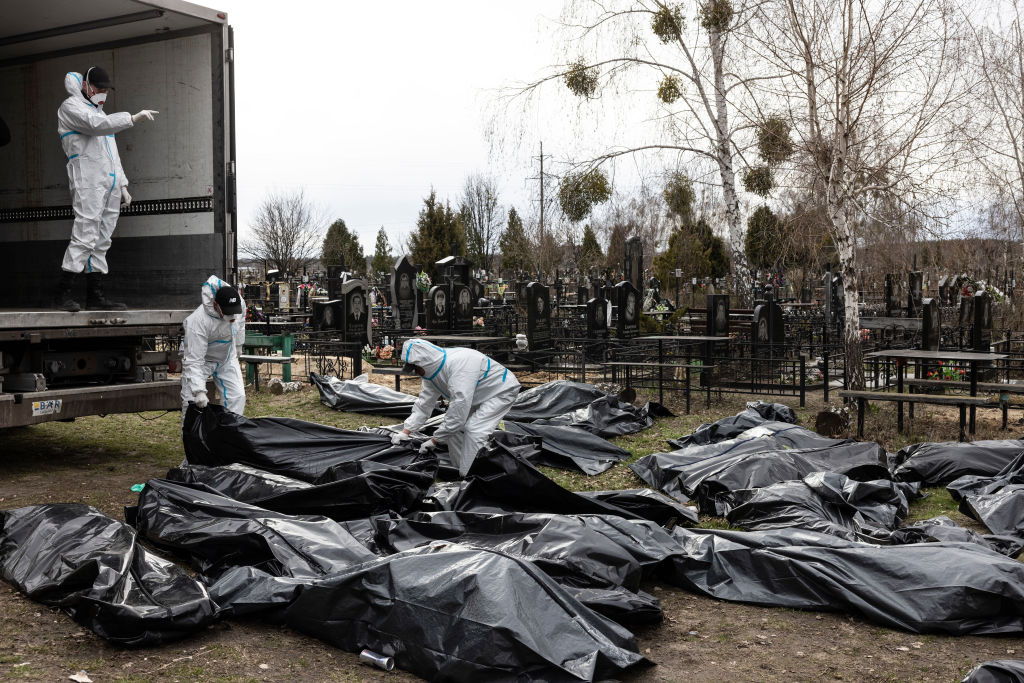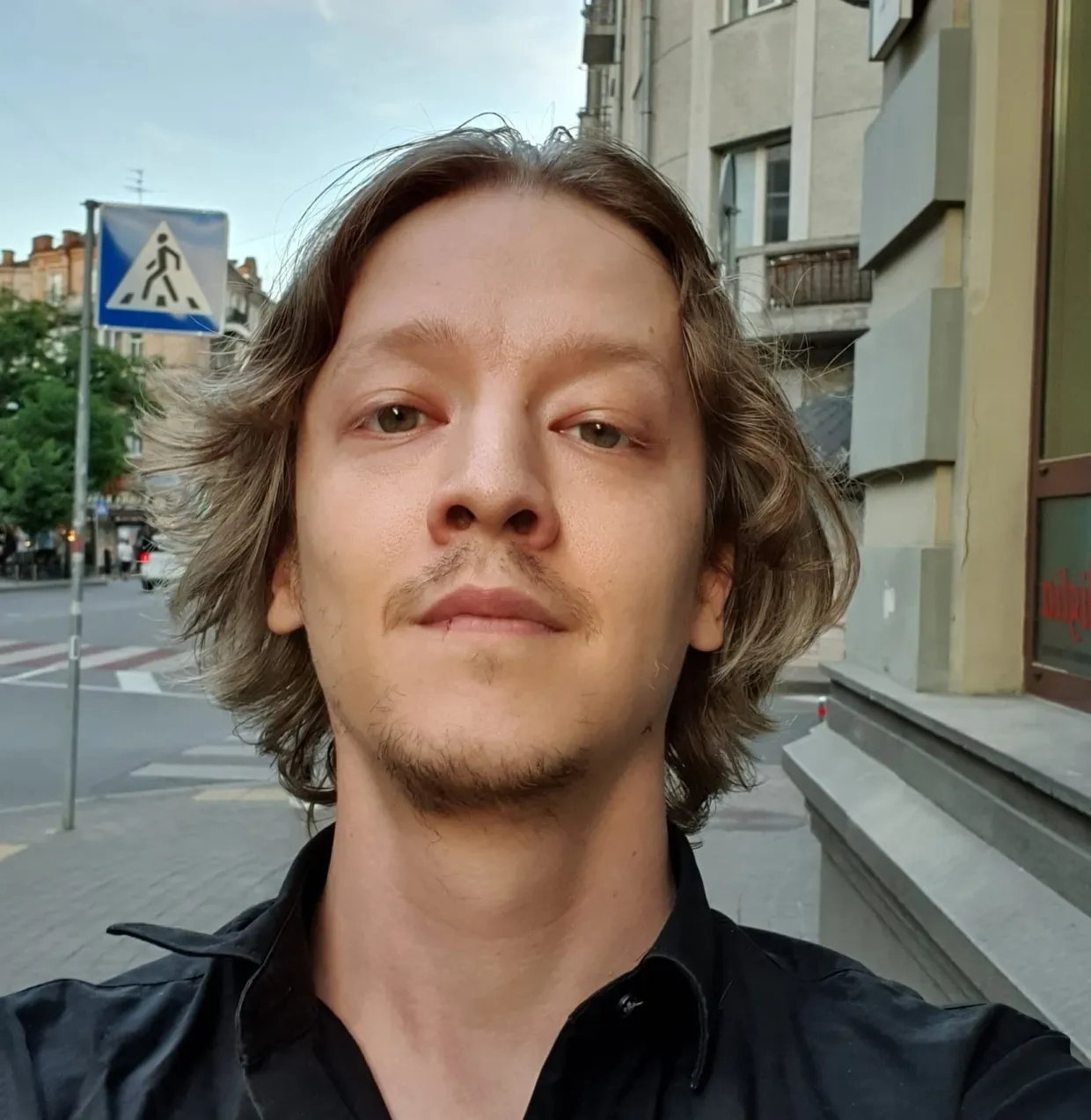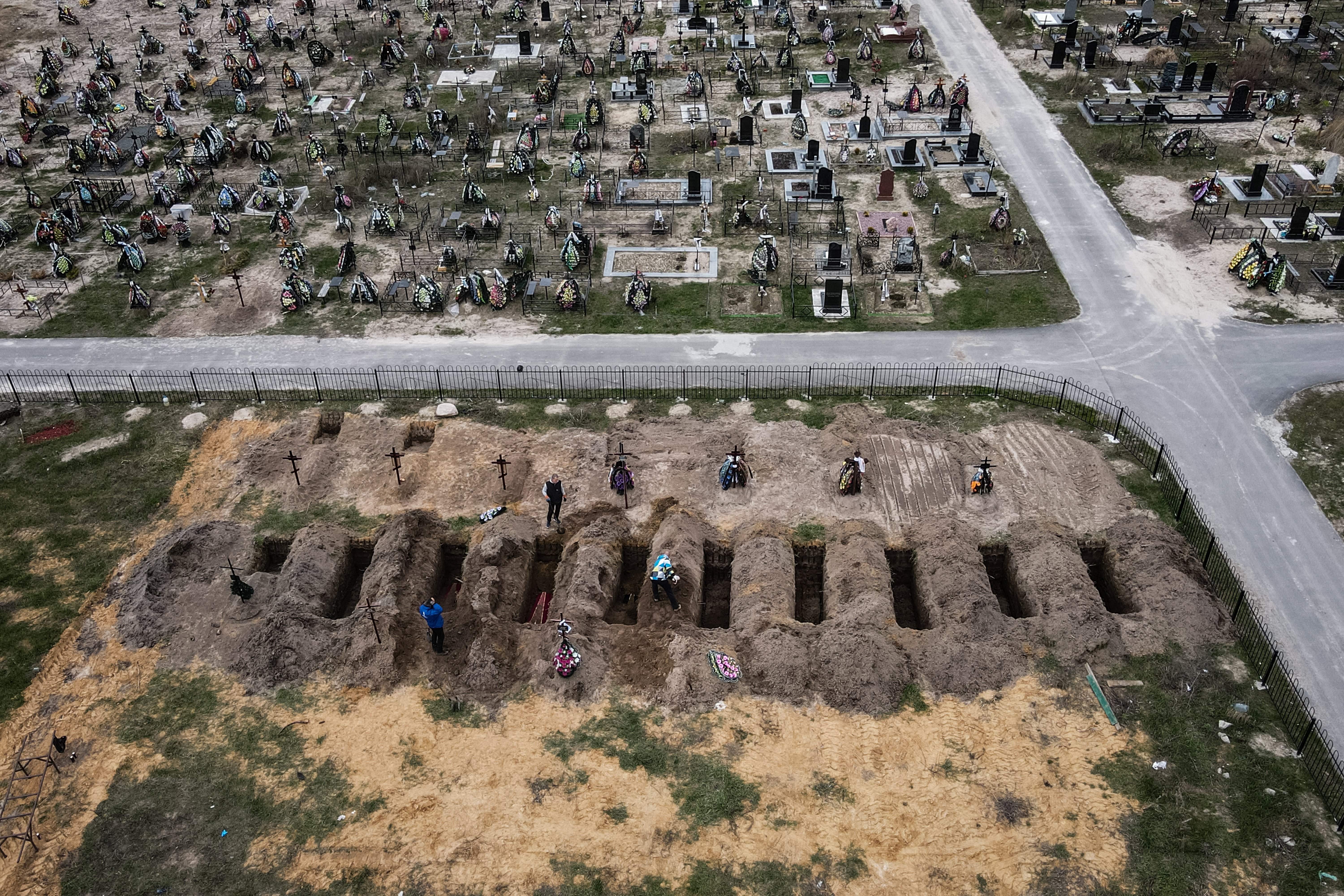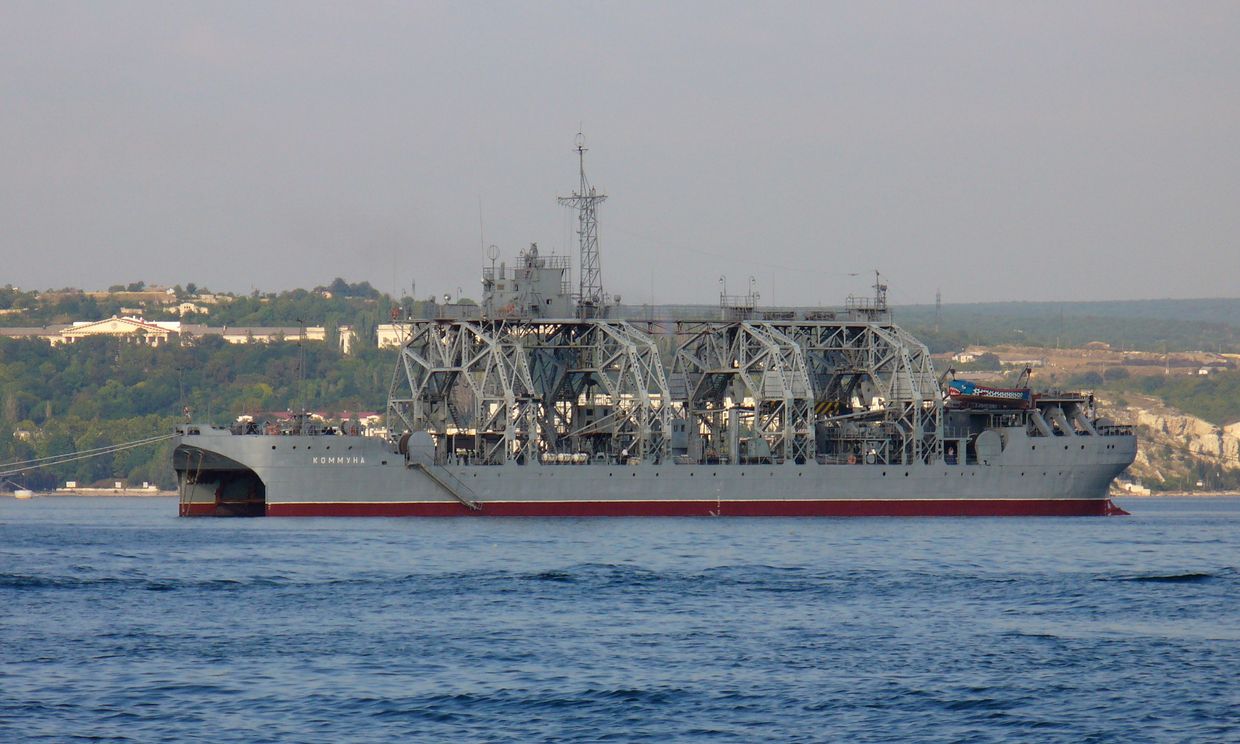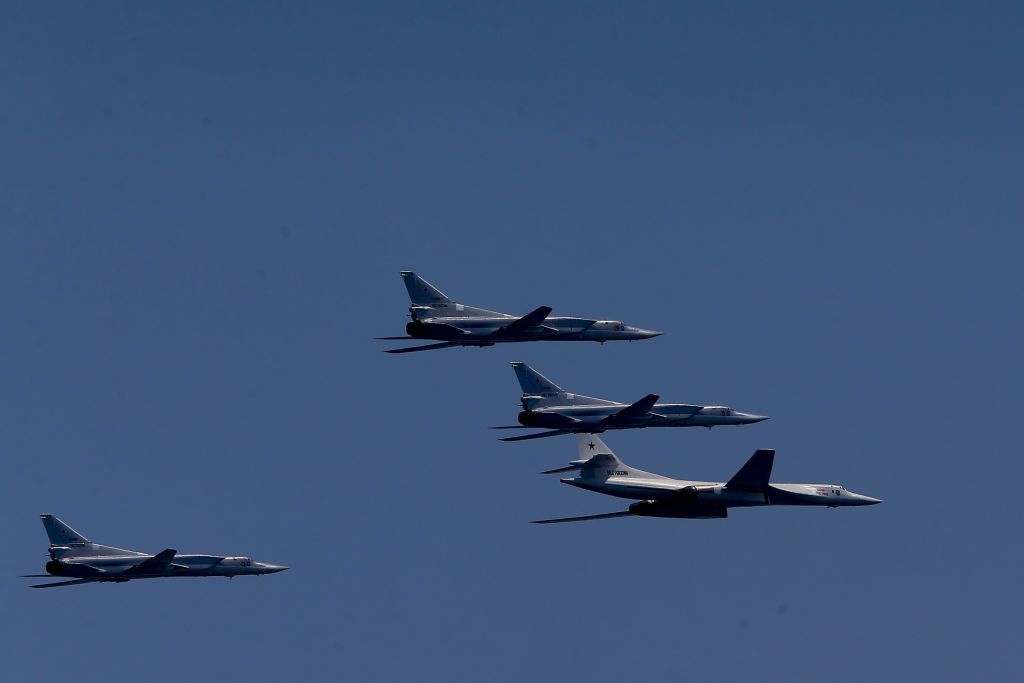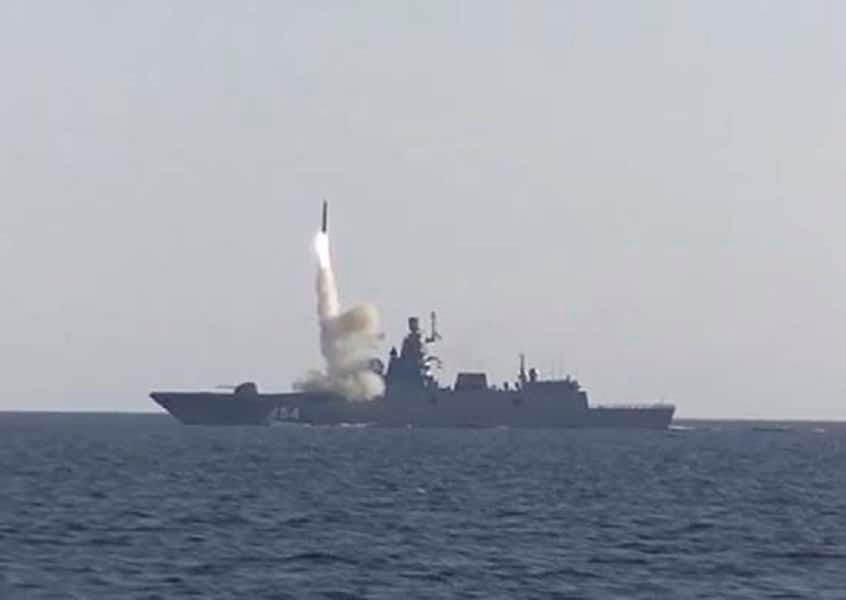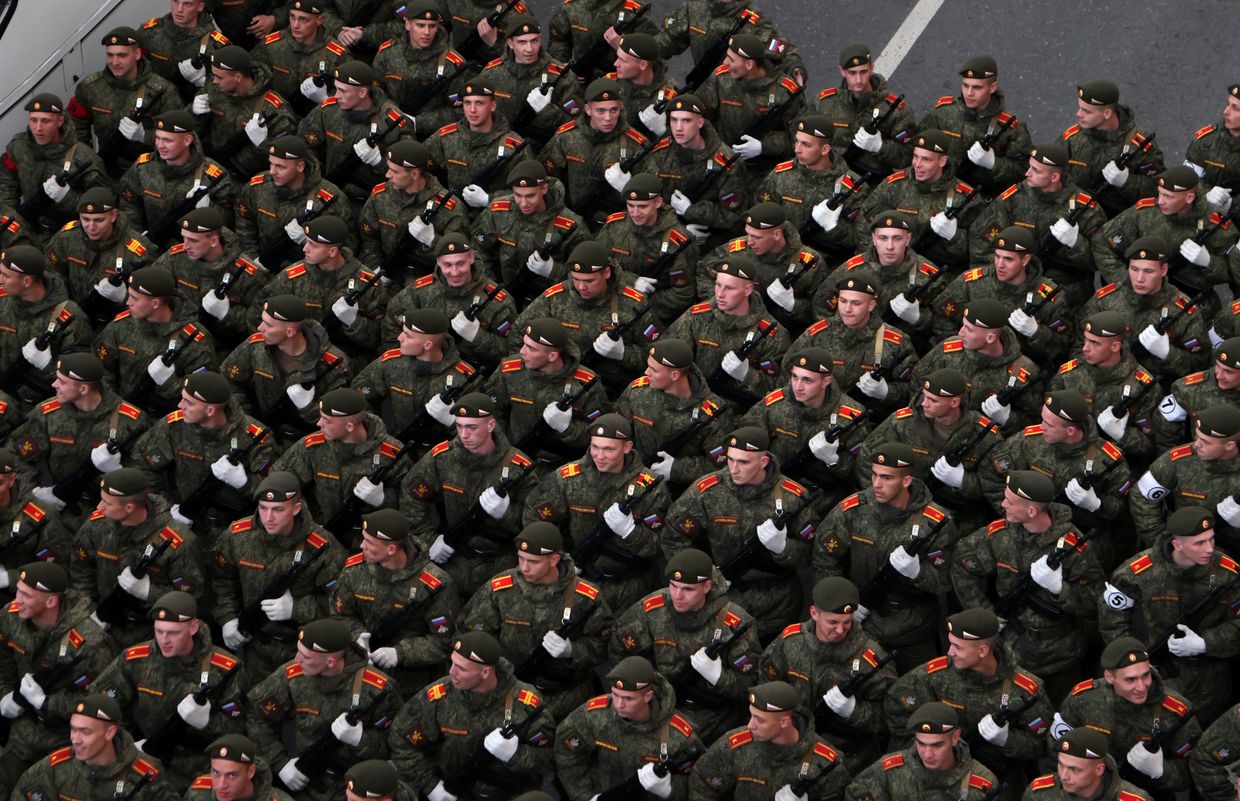BUCHA, Kyiv Oblast – As Ukraine recaptured the town of Bucha, the world saw the extent of the violence Russian soldiers inflicted on the civilian population.
Since the Russian forces were driven out of Kyiv Oblast, 412 bodies have been found in the town’s streets, buildings and mass graves as of April 19, according to Bucha Mayor Anatoliy Fedoruk. Over 600 bodies were reported in Bucha District as of April 15, Human Rights Watch reported, citing the chief regional prosecutor.
Over the past three weeks, rescuers, volunteers and journalists have been combing through the evidence and survivors’ testimonies to establish what happened here over the six weeks of occupation.
It all came down to one clear fact: Russians had a citywide shooting spree in Bucha. According to Fedoruk, over 80% of the bodies have bullet wounds, largely in the head and torso.
“If in Irpin (a city next to Bucha) people died from fragments caused by shelling and mortars, in addition to being shot, then in Bucha people were mainly just shot,” Taras Vyazovchenko, a city council member, told the Kyiv Independent. “There are practically no accidental hits among the victims.”
According to interviews with local officials and over two dozen residents, Russian troops killed people both randomly and systematically. They sought some people out, like local officials, activists or sometimes just men of military age. They killed others on the street for various reasons and sometimes no reason at all.
“There are shootings of peaceful citizens that can't be explained in any way,” Anatoliy Kotesh, a deputy police chief for the Buchanskyi District, told the Kyiv Independent.
While local officials couldn’t give exact figures on how many people were found on the streets and how many were found in homes and basements, they said the amounts are comparable.
The Russians split the city into four sections, Fedoruk said. They were variously held by units largely composed either of ethnic Russians, ethnic Siberians such as Buryats, or the Chechen military, often referred to as Kadyrovites after their leader Ramzan Kadyrov.
The killings hit the micro-neighborhoods of Yablonka, Sklozavodska and Lisova Bucha especially hard, according to the mayor. The area around Yablunska and Vokzalna streets saw some of the worst of the carnage.
“It got to the point where if people were walking to those micro-neighborhoods, the Russians told them not to go,” said Bucha volunteer Denys, who declined to give his last name for safety reasons.
Other than being killed outright, some locals were tormented by Russian troops, who threatened people with death or forced them to obey humiliating orders. Others were reportedly abducted to local villages to be tortured there, according to Vyazovchenko.
Hunting people down
The invaders conducted large-scale searches for local threats throughout the city.
“Since the occupation of the city, every house, every apartment, every institution and business was broken into, opened by Russian occupiers,” said Fedoruk. “Doors, windows, gates, all were broken and they went in to clear.”
The Russians went around, hunting specific people and types of people.
“They had printed lists,” Fedoruk said. The lists must have been printed out before the war, he believes. People on the lists included political leaders, members of the city and regional government.
Other sources confirmed that there were lists. Vyazovchenko said apartments belonging to officials were searched more thoroughly or frequently compared to their neighboring flats. According to Vyazovchenko, the Russians also looked for activists.
BBC Ukraine reported that jailed Kremlin critic Alexei Navalny's second cousin Ilya Navalny was found in a mass grave in Bucha, possibly killed for his relation to the Russian dissident or even simply for sharing the same last name.
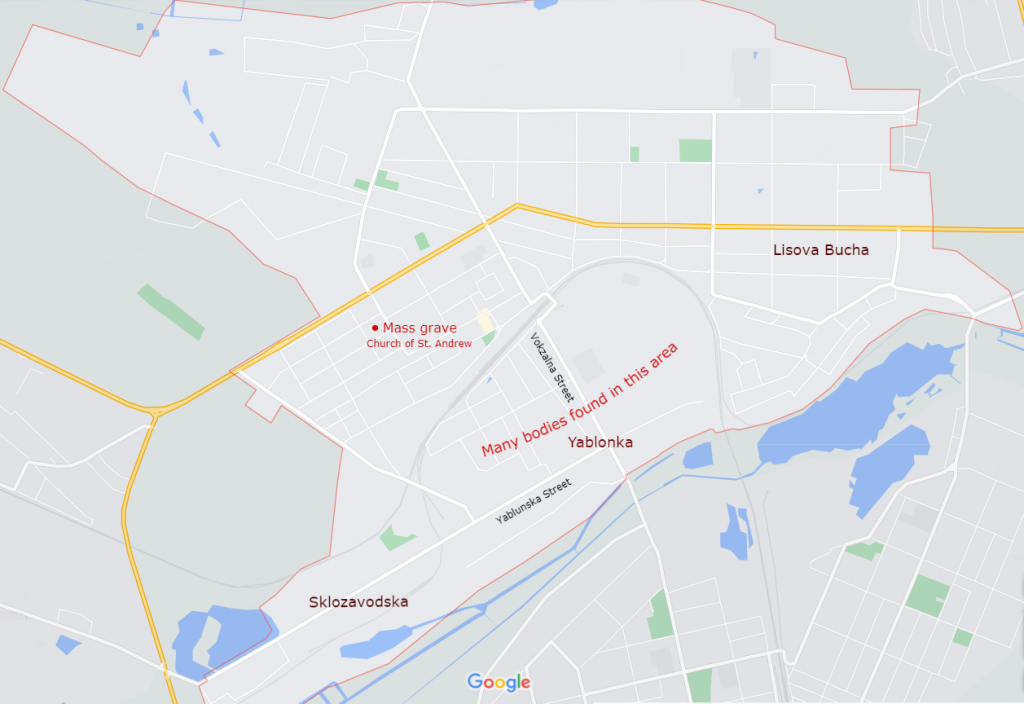
Andrii, a Territorial Defense member who’s currently operating in Bucha, Irpin and the nearby villages, told the Kyiv Independent that all military service members, people who fought Russian proxies in Donbas, and Territorial Defense joinees were persons of interest. Some of them were found murdered, with their hands tied behind their backs.
Multiple survivors who stayed in Bucha throughout the occupation told the Kyiv Independent that Russian troops were killing men of military age. When they didn’t kill them, they threatened to kill them.
“Yes, they searched the homes… sometimes if they saw men of military age, they took them away and they weren’t heard from again,” said Tamara Hryhorieva, a custodian at School 3 in Bucha. “I have an acquaintance (in Lisova Bucha). They came to her home, took away her husband, her brother-in-law and her son.”
The father of her granddaughter, 28-year-old Territorial Defense member Vitaliy Karpenko was also shot in this area on March 4 and his body laid on the ground throughout the entire month-long occupation until it could be picked up, identified and buried.
Andrii from Territorial Defense said the Russians employed some local informants who rode along in their armored personnel carriers, pointing out the homes of the people Russians wanted to hunt down. He declined to give his last name because he is helping the Security Service of Ukraine find and arrest such people.
Oleksandr Omelyanenko, the chief of police in the Buchanskyi District, confirmed to the Kyiv Independent that there were cases of collaboration that are being investigated.
Kotesh, his deputy, said that it’s unclear how much of this happened under duress.
Shot in their homes and shelters
Other times, Russians killed people in homes and shelters for reasons that are still unknown.
“We can't explain the logic of Russian occupiers — they killed people over any suspicions,” said Kotesh. “(They might have assumed) that he works with the Ukrainian military or another reason they most likely invented for themselves.”
Tetyana, a young woman who lives near the infamous Yablunska Street, where many bodies of civilians were discovered after the liberation of Bucha, told the Kyiv Independent that the Russians came into her apartment and shot her husband to death for an unknown reason while she was sheltering in the basement.
She declined to give her last name or any more details, saying the memory was too painful.
People who spoke to the Kyiv Independent also said that Russians fired and threw grenades into basements where people were hiding.
Tetiana Oleksandrova was forced to take shelter under School No. 3, after her apartment was shelled, concussing her. The school basement contained mostly elderly women, as well as four people in their 30s — Oleksandrova, her husband Andrii Fotchenko, another man, and a disturbed woman named Yulia who claimed to have seen her family torn apart by a shell.
Eventually, the Russians came, intending to use the school as a base. A Kadyrovite “with jackal eyes” appeared at the top of the basement stairs with an assault rifle and opened fire, Oleksandrova said.
The bullets grazed Fotchenko’s rib, hit the other man in the leg and would have struck Oleksandrova if she hadn’t pushed someone away and bounced off towards the wall. She realized whom she pushed away when she saw Yulia’s brains on the basement floor. “That bullet was for me,” she said in retrospect.
The Russians then threw four flashbangs into the basement, giving Oleksandrova and her cat their second set of concussions. The elderly women piped up, telling the Russians that they’re grandmothers and begging them not to attack. The remaining 30-somethings claimed to be the seniors’ caretakers. “Without them, we’d have been killed,” Oleksandrova said.
Another example could be found on Tarasivska Street, amid a group of three-story residences. Local residents told the Kyiv Independent of three people who were shot to death inside an apartment. A neighbor, Mykola, said that on March 16, Russian soldiers brought a wounded girl to the home of an older couple, Viktor and Natalya Mazokha. The young woman was identified as 23-year-old Karina Yershova, who was likely raped and tortured by the Russian troops.
“I don’t know what happened next but the soldier fired a volley at the ground, an officer came in and shot all three of them,” Mykola told the Kyiv Independent. Three days later, Mykola and the other neighbors were told that there were bodies in the apartment. Over a week later, the neighbors were told they had two hours to bury them.
The three were buried together, along with a man who had been shot down by a sniper elsewhere in the immediate area. The four graves were later exhumed and the bodies taken away to be medically examined and given a proper burial.
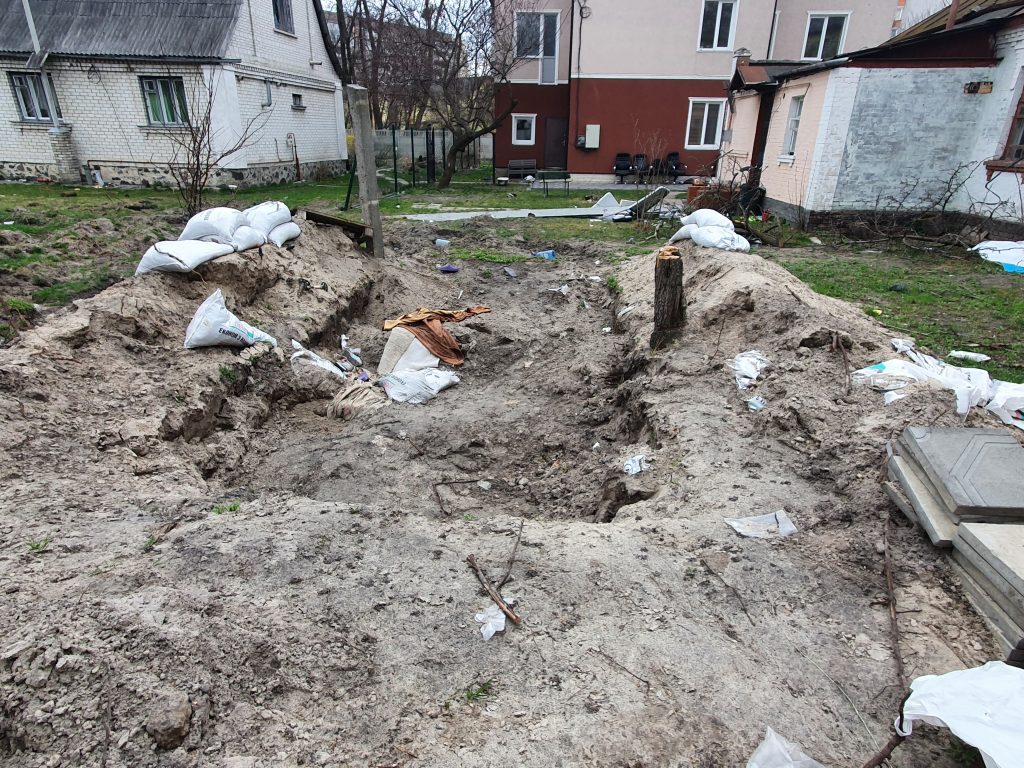
Gunned down on the street
Still others were killed either randomly or because they happened to be outside and the Russians decided to open fire for whatever reason.
Multiple residents of a cluster of nine-story residential buildings on Tarasivska Street said that Russian snipers covered the entire area and being on the street for any reason was liable to get you shot.
Six people from the cluster were killed. Another two died from health complications because the Russian kill zones prevented medical aid from reaching them.
But more random killings seem to have happened around Yablunska Street, where local survivor Nadiia saw a man riding a bike randomly shot to death. She declined to provide her last name for security.
Several minutes away stands another nine-story building where three residents were killed by Russians. A dark bloodstain on the pavement marks the spot where a man named Oleh fell. He was gunned down for walking around a corner, within view of an adjacent building where a high-ranking Russian officer was staying, his neighbor, Liudmyla Sulema told the Kyiv Independent.
Another building resident named Artyom descended to the building’s garage in the middle of the day. Russian soldiers walked over, opened the garage and shot him to death, Sulema said. According to Human Rights Watch, Artyom was getting food. Before the invasion, he reportedly worked on a military base painting vehicles for the Ukrainian military.
Many people were shot either when they were forced to go outside to scrounge for food and water, bury bodies or escape from the occupied city.
Denys, the volunteer in Bucha, says that some of his friends and neighbors have been killed.
“My classmate was shot in his car when he was trying to get out,” he told the Kyiv Independent.
“My neighbor in a different neighborhood went out searching for food with his friend,” he continued. “The neighbor was killed and the friend was given a wheelbarrow to take him away and bury him somewhere.”
Even being indoors was no guarantee that you wouldn’t be shot from outside. A woman from Artyom and Oleh’s building, also named Tetiana, showed the Kyiv Independent bullet holes in the glass of her 9th floor balcony. Human Rights Watch reported that elsewhere in Bucha, a man was critically wounded when bullets came flying through his balcony window.
Killings, threats and humiliation for fun
Oleksandrova, who took shelter at School No. 3 and later at Yablunka kindergarten near the housing complex of the same name, said she heard a few Russian soldiers admit to taking potshots at people out of boredom.
“They would say ‘we’re bored,’” she told the Kyiv Independent. "He said, 'sometimes we like how you dance to avoid the bullets.’" Oleksandrova’s husband, Fotchenko, quoted a Russian soldier as saying “Yes, we’re shooting chaotically.”
Others have said that these kinds of attitudes were widespread.
Vasyl Kozabovsky and his entire family had to face death when Russians ordered them out of their shelter and lined them up against the wall of their house on Suvorova Street, saying, “now we’re going to shoot you all. Our orders are to kill everyone.”
His wife fell to her knees as Kozabovsky pleaded for the Russians to at least spare their kids, including his underage son and pregnant daughter, who stared directly into the eyes of one of the invaders. “Fine, we won’t shoot you,” the Russians eventually said.
Survivors said Russians sometimes forced people to strip in the cold or put sacks on their heads and fired guns next to them.
As Buchans were killed, others would try to bury them, which was extremely dangerous. According to Fotchenko, one young man was shot in the leg while burying a body; in the absence of good medical care, the leg had to be amputated.
Vyazovchenko said that in one instance, when two men were killed, their relatives were only allowed to bury one. Russians booby trapped the other body with an explosive.
He added that some people were abducted from Bucha and taken to nearby villages, where they were tortured by the Russians.
Laura Hvorostyna, who ran the Yablunka kindergarten where many survivors took shelter, came up with a phrase for the occupied Bucha experience.
“It was Auschwitz lite,” she said.
